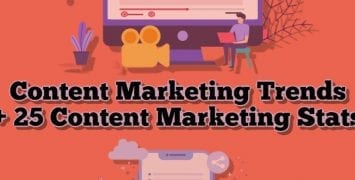How do you reach potential customers for your online business?
Organic traffic helps your site connect with users interested in the types of products or services you offer. Social media effectively helps increase brand awareness and general buzz. But what about creating a direct, personal connection to your users?
Email is a great tool to develop long-term relationships with customers. Although email marketing might seem a bit tedious and old-fashioned, it’s actually a viable and effective conversion strategy.
Here are five brand new emails tips your brand should be using today:
1. Each Email Should Have an Obvious Point
You’re not writing War and Peace here. Each email should have one – and only one – clear purpose. Make the focus of your email narrow. Some common email objectives include:
- Promoting a product
- Advertising a sale
- Providing a specific piece of brand information
Your entire email is built around one central idea. The email’s purpose will influence the content, call-to-action, design and more.
2. Target with Precision
The people within your customer base can be divided into smaller groups. Each group will have their own needs, pain points, interests and preferences. These groups of similar customers are called buyer personas. Check out The Power of Buyer Personas for more info.
Each persona responds to a different marketing style. Emails are an easy way to craft custom messages. You can tailor the message, language, design and more for your audience. Studies show segmented email campaigns have an improved open rate of roughly 14%.
3. Get Personal
Nobody really wants to think of themselves of a part of a “buyer persona.” People want to be treated like, well, people. You want your emails to be as personal as possible.
Use the word “you” when addressing the reader. Write from the point of view of one person. If you’re a small business, emails should be “from” the owner (even if they’re actually written by a professional copywriter). If you’re a large company, the emails can be from a marketing spokesman or someone similar within the organization.
Address each customer by their first and last name. You’ll also want to personalize the contents of the email as much as possible. Transaction emails which reference a customer’s recent purchase have up to a six-time greater return rate than a bulk email. Personalized product recommendations have a 2% greater revenue return and a 1% improved conversion rate.
4. Act Natural
Avoid marketing jargon or an overly business-y tone. Instead, your emails should have a relaxed, natural vibe. Treat the reader as a friend. Use an upbeat, conversational writing style.
Also, keep your emails short. Don’t include extensive product specs or other detailed info. The goal isn’t to completely convince the reader to make a purchase. Instead, you want to move the reader through the email towards the call-to-action at the end.
Check out my guide on conversion optimization to learn how to create a call-to-action readers which will respond to.
5. Use Awesome Subject Lines
The subject line is probably the most important part of the entire email. You need to grab the reader’s attention quickly. One strategy I personally find to be effective is the CURVE approach:
- C – Curiosity
- U – Urgency
- R – Relevancy
- V – Value
- E – Emotion
First, engage the reader’s curiosity. Make the reader think they’re missing out on a great deal or effective solution if they don’t open your email.
Then, stress the urgency of action. Let the reader know this a limited time offer. In order to get results, the reader needs to take action today.
The topic of your subject needs to be relevant. Make sure every offer is directly related to your industry and brand. You’ll also want topics to be relevant to the specific customer group you’re targeting – not just your customer base as a whole.
Promise and deliver actual value. If your subject line promises more info on a topic, the body of the email needs to contain actionable information. The call-to-action should lead to even more details. Readers must never feel misled.
Engage the reader’s emotions. Subject lines should be light on technical details and heavy on emotional satisfaction. Your reader’s life is going to be dramatically improved after they buy your product.
The Benefits of an Email Campaign
The key to an effective email campaign is understanding your readers. When you understand their needs, you’ll be able to craft specific emails which connect on an emotional level.




